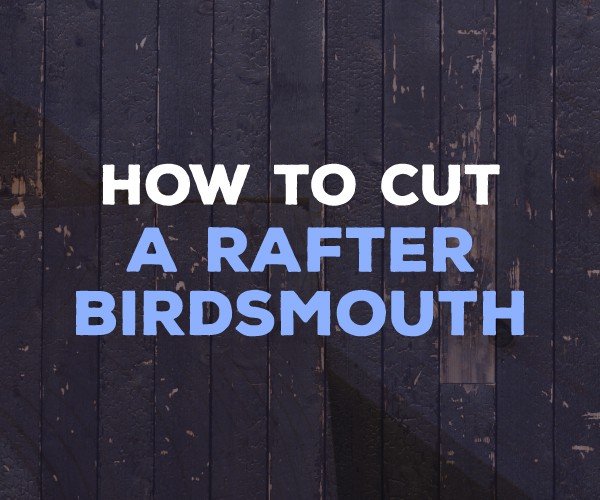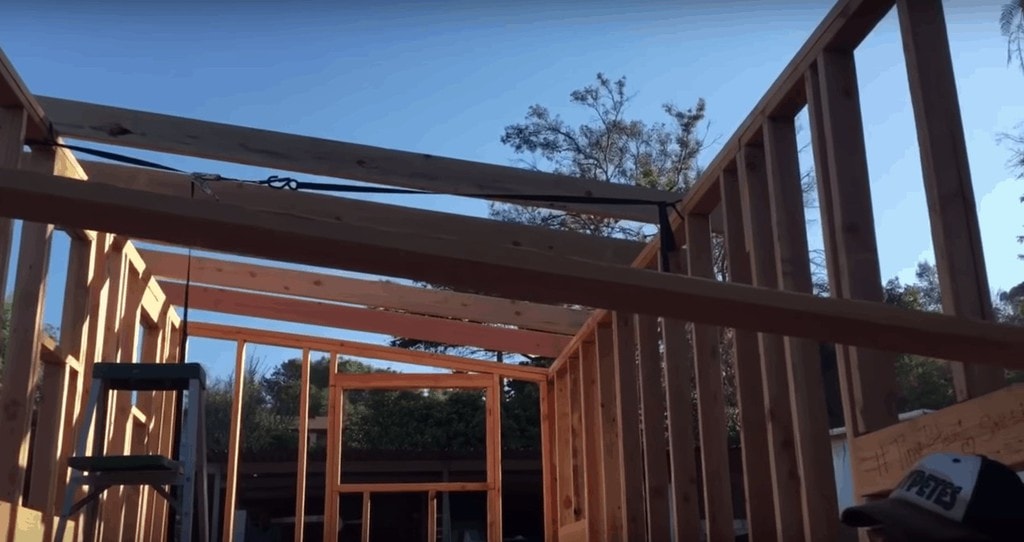When it comes to laying out a rafter, it’s essential to understand the basic building blocks of framing. Among the most important individual components is the birdsmouth joint.
Also known as a bird’s mouth joint or sometimes a bird’s beak notch, this type of cut is typically used to securely connect a rafter to the top of a supporting wall with the help of a wall plate.
If you’re attempting to build a shed roof, simple gable, or other rafter layout, then you need to know how to cut a rafter birdsmouth.
Although it might seem intimidating first, making such a cut is actually quite basic and doesn’t require many tools.
We’re certain that by the end of this guide you’ll have the confidence needed to make this important cut.
What You’ll Need
There are quite a few ways to cut a birdsmouth in a rafter.
For our purposes today, we’ll show you the method that requires the fewest tools:
- Circular Saw
- Hand Saw
- Tape Measure
- Carpenter’s Square
- Carpenter’s Pencil
Step I: Consider the Overall Plan
Before you dive in and make a single cut, it’s important to step back and consider the overall framing plan.
Take a look at the plan for the roof in specific, noting the number of rafters used and the pitch at which the roof will sit.
While you’re taking stock of the situation, start making preliminary measurements.
These will include the distance from the top of the wall to the top ridge plate of the roof as well as the distance from one outside wall to the other.
Step II: Make Your Calculations
The next step is actually one of the trickiest.
It’s time to make three important calculations that will be vital for cutting each rafter to the right length and making the correct birdsmouth cut.
The first is to multiply the distance from the top of the wall to the top of the ridge place by itself.
The second is to subtract the distance from the top of the wall to the top of the ridge place from the distance from one wall to the other wall. Divide this number by two and then multiply resulting number by itself.
The next calculation is to add the two numbers together to find their square root.
The square root of these two numbers is the figure you will use for most of the additional measurements while making the birdsmouth cut.
Step III: Cut the Top End First
Take a break from the measuring by cutting the top end of the rafter first. This ensures that you make the birdsmouth cut at the right length in the rafter.
Step IV: Measure and Mark Plumb Cut
Use the square root figure to measure along the top of the rafter. Make a mark along the top edge of the rafter where this measurement ends.
Repeat this step along the bottom of the rafter. Make a mark along the bottom edge of the rafter where the measurement ends.
Draw a straight line between these two marks using a carpenter’s square or similar tool.
Remember that this line is for the plumb cut of the birdsmouth. It should always be parallel with the cut you just made at the other end, the top, of the rafter.
Step V: Measure and Mark Horizontal Cut
Use the new lines marking the plumb cuts to mark lines for the horizontal cuts.
The horizontal cuts will be at right angles to the plumb cuts, so make these marks accordingly with the help of your carpenter’s square.
Step VI: Make the Cut
Use a circular saw to cut along both of the new marks that you’ve just made.
Make sure to work slowly and carefully to accurately cut on the measurement lines.
Chances are that the circular saw won’t cut all the way through the birdsmouth. There will still be a small portion that needs to be cut.
Although you can use a jigsaw or similar tool for this last bit of cutting, I find it easiest to use a simple handsaw.
Step VII: Use as a Pattern
You should now have a perfect birdsmouth cut in your first rafter.
Because a roof requires many rafters to frame, it speeds things along if you use the first rafter as a pattern or template for the other rafters.
Use it to make the proper measurements, marks, and cuts on each rafter.
Final Thoughts
Creating a birdsmouth cut is the classic way to prepare a rafter for a hand cut gable or shed roof.
While it can certainly seem too complex for a beginner at first, learning how to cut a rafter birdsmouth is something almost anyone can do.
Just remember to check that your rafter layout, and more specifically the wall plate you’re using, actually require a birdsmouth joint before making any cuts.


